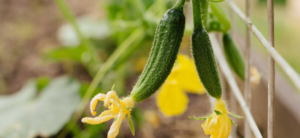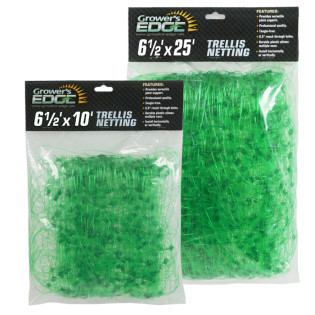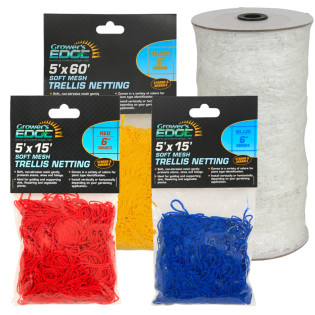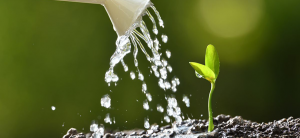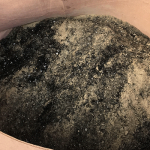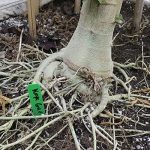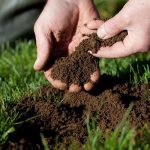
As you become a more serious grower, the bulk of your work will be on plant training.
Whether you are simply topping your plants, or bending and tying branches down, you need to do more than just feed your plants and let them grow if you want impressive yields.
Training your plants leads to more explosive growth, heavier yields, and the ability to dictate the manner in which your plants grow.
This is really important for indoor growing, where height may be limited, and you need to grow short, bushy plants.
Before we start covering all the different methods of plant training, let’s cover some basic information on it!
Jump to section: Low-Stress Training (LST) | No-Technique Training | Supercropping | Screen of Green (ScrOG) | Topping | Manifolding (Mainlining) | Defoliation |12-12 From Seed | Sea of Green (SoG)
What is plant training?
To put it simply, plant training is when you physically manipulate your plant so it produces more bud sites. This leads to more flowers, and thus a heavier yield.
When you leave a plant to grow on its own without training it, it will grow in the shape of a Christmas tree - with one large cola dominating the plant. This is not optimal, because while that one cola produces lots of flower, you end up with a ton of popcorn buds from the rest of the plant.
Instead, you can train your plants to grow more like a bush, with multiple colas producing huge flowers! This is how you truly get weight. On average, you can see a 40% increase in yield when training compared to not training!
Why plant training works
When plants grow outdoors in the sunlight, the natural rising and setting of the sun hits the plant with light from all angles. This leads to a more bushy, filled out plant.
But, when you grow indoors your plants get light from your grow light - which is stagnant overhead (except for in commercial grows that use light movers).
To solve this predicament, you need to expose light to areas of the plant that don’t usually get it. You can add supplemental side lighting, but not every grower has space or budget for this.
So, you need to some manual work! This can be done by removing fan leaves, bending and tying back branches, pruning off dominant growth and more.
When you do any of these things, it’s considered training. On that note, let’s explain the different types of plant training:
- Bending and securing the plant
- Damaging or removing parts of the plant
- Manipulating timelines to get to harvest faster
We will start with techniques that involve bending and securing the plant and work our way down the rest of the list.
Low-stress training
Low-stress training is one of the most popular types of plant training because its easy and leads to impressive results.
Many other types of training rely on first using LST. This falls into the “bending and securing” category of plant training, and is actually all you do here.
When should I start low-stress training?
You should start LST when the plant is young and malleable. This will prevent you from snapping the branches when you bend them back.
You shouldn’t do this the day your seed pops through, though. Wait until you have at least 4-6 growth nodes. Some growers recommend topping your plant before you tie it down, asserting that this leads to better results.
How to do low-stress training
Once your plant is ready, simply bend over your tallest stems and tie them down. You can use a lot of different things to tie the plant down, but using plant twisty ties or hooks is your best bet.
Trying to use any sort of wire, or anything that has a harsh edge can slice or damage your plant. This can stunt growth, and serve as an entryway to pests and diseases.
Your goal with LST should be to keep all aspects of your plant roughly the same distance from the light. So, this will be a process you repeat throughout the life of the plant. Think about opening your plant up, so light can penetrate straight through the middle of it.
Low-stress training tips
- Only bend young growth - trying to bend older growth is not ideal, as these branches can easily snap. Instead, bend new, young growth, which is very flexible. Bend at the tips of the plant, as this lowers the risk of damage as well.
- Be gentle and cautious - there is no reason to rush through this or to be aggressive with your plants. Take your time, and be gentle. You can always go back and bend more, but you cannot really mend a broken branch.
- Tie your plant securely - If you tie your plant back loosely, continued growth can cause it to “slip”, which causes abrasions to the branch and lowers the effectiveness of your plant training. If need be, you can use more than one tie.
If you are thinking of trying LST for your grow, do this process once a week. Find the tallest shoots of growth, and bend them over and tie them down.
When you go to flower, you will have lots of colas producing big, dense flowers! Learn more about this technique in our complete guide to low stress training.
No-technique plant training
No-technique training is a very similar form of training to LST. It is a great option for new growers, because it isn’t very complicated and allows you to dip your toes in the water essentially.
You simply bend over the main stem when the plant is young, just like with LST. However, this is the only training you do. The main difference is that with LST you are constantly bending new growth to create a big, flat canopy.
Here, you just do it once - and let whatever new growth occurs happen! This is definitely a lazier style of growing, but we understand not everyone wants to spend hours training their plants every week!
Supercropping
Another form of bending and securing your plants is known as supercropping. It is definitely a more advanced style of training and is actually considered high-stress training.
While that sounds sort of concerning, stressing your plants can be a good thing. It forces your plant to push out as much energy into producing resinous buds as possible, as your plant thinks its life is ending.
When should I start supercropping?
You should start super cropping your plants early in veg after you see a healthy amount of branches. While with other forms of bending and securing you want to look for the youngest growth, that is not the case with supercropping.
You should choose branches that are a bit older, but still pliable. The branch should still be green, however - not hardened wood like the main stalk of your plant.
How to supercrop your plants
The goal with super cropping is to damage the inner tissue of your branch without breaking the outer layer of “skin”. This way, you can bend the branch whichever way you choose, without breaking the branch open and risking pest or disease penetration.
Once you have determined which branches you will be supercropping, grab it and squeeze firmly. You are essentially trying to crush the branch. Then, wiggle the branch, back and forth. You are trying to loosen up the area you want to bend at.
Once you feel that the inside of the stem has softened, you can bend it whichever direction you want, and secure it in place. The difference between this and LST is the age of the branch you bend, and the extent to which you “damage” the plant.
How long after supercropping can I flower?
You will need to give your plant some time to recover after supercropping. Growth will stagnate for a short period while it recovers from this stressful style of training, but then it will increase dramatically.
The result will be a plant with TONS of colas! Plus, your plant will be shorter, bushier, and more controlled. This is a great style of training for those growing in a closet.
If you accidentally a break a branch, its not the end of the world. You can tape it with duct tape and hope it heals (sometimes it will!), or you can simply top that branch and move on.
Screen of Green (ScrOG)
Screen of Green, or ScrOG for short, is one of the most popular styles of plant training. It involves using a trellis net to support stems as they grow, and promotes a wide canopy using another training technique - topping (we’ll cover this in the next section).
With ScrOG, the goal is the maximize the footprint of your light. As you likely are aware, the effectiveness of your light diminishes the further you extend from the center, and the greater the distance between it and your plants. To combat this, you can bring your light closer to your plants.
But with a normal grow, you only can bring your light so close before it hits the top cola - or gets too close and burns it. That’s where screen of green comes in - you can bring all the colas to the same height, so they get more even light across the canopy.
Before we explain how to ScrOG, let’s make it clear that simply putting a trellis net over your plants is not enough. That is just plain old plant support, and not an actual screen of green.
How to ScrOG your plants
There are a few different ways you can go about building a ScrOG, but we will teach you the easiest way. Once you have your plants in your tent or grow room, you should set up your screen before they are even near its height.
You need to be strategic about the height at which you hang it, factoring in your grow lights. We recommend going about 12-15” above your plants, provided you still have around 20” or so above that for your grow lights. You don’t want to risk burning your plants!
You can attach the trellis or whatever screen you’re using to your poles if you are in a tent, making it easy. Your main cola will inevitably grow through the screen first, at which point you should top it. You don’t want it to grow much taller than the screen.
Instead, you can top it and divert energy to the rest of the plant. As other colas catch up, weave them through the screen, as wide as possible. As these other colas continue growing, you can weave them back through and into a further hole in your trellis. This is how you get a blanket of colas!
This is the last “bending and securing” style of training we wanted to cover, and we will now move onto the other training styles - damaging or removing parts of the plant.
Topping
Topping is easily the most simple form of plant training there is. It's exactly what it sounds like - you just cut off the top of a growth node!
Your plant's natural tendency is to grow with one dominant cola in a Christmas tree shape.
This is not optimal when it comes to getting as much weight as possible. So, you can cut the top of a plant, and it will grow TWO colas instead of one!
How to top your plants
You can top your plants when they are young, preferably with 4-6 nodes (sets of leaves). Doing it sooner than this can lead to stunted growth or shock the plant.
There is certainly going to be some degree of stress that slows growth, but this will be pronounced the younger you do it.
When making the actual cut, try to remove as minimal plant matter as possible. The less you chop, the less your plant will be stressed.
Topping can be combined with other forms of plant training, such as LST, to get maximum yield.
Can you top a plant twice?
When you cut off the top of a plant, it splits into two new growth nodes. If you top those, you end up with four growth nodes, etc.
But, the weight of each node diminishes when you top - meaning you can’t just top a plant 100 times and get 100 times as much flower!
You can top a plant as many times you want, but there is definitely a sweet spot. Don’t overdo it, as this does stress your plant out. You should space out toppings and give your plants time to recover.
Does topping slow growth?
Topping is a stressful form of training for plants, and you will definitely see some slowed growth when you do it. After all, your plant has to form new growth nodes after you cut one off, which takes time. However, your plants will definitely bounce back. Like we said, just don't overdo it.
The difference between topping and FIMing
FIMing is a similar plant training strategy to topping, but there is a minor difference. Instead of cutting the tip of the plant, you shave it. This is a bit tougher, but it does all the same things topping does, with less stress on the plant.
However, the downside to FIMing is that it isn’t always successful. Sometimes, the plant will still show apical dominance (one large cola), so you’ll have to try again.
Manifolding (main-lining)
Manifolding, sometimes referred to as main-lining, is a type of plant training that implements a precise topping strategy.
There are quite a few reasons growers love manifolding, including less work training the plant and getting the training work done early in the plant's life.
Plus, you’ll enjoy bigger yields, lower chances of bud rot and mold, less time spent trimming during harvest, better drying, and better appearance (bag appeal).
There are a few situations where you should not manifold your plants, such as:
- When you grow auto-flowering plants
- If you have low powered grow lights
- You don’t have much head height
- Your plant is growing slowly or isn’t 100% healthy
How to manifold your plants
Part of the reason manifolding plants is so popular is that it's really easy!
You start by letting your plants grow and build a base for the manifold.
Once your plant has six nodes, you’ll top to the third node. Then, clean up all the other growth expect two nodes.
From there, you focus on making 8 colas - 4 per side. You’ll essentially repeat the process above, starting by topping to the third node.
Then, remove all the growth from the 2nd node, so that only nodes 1 and 3 remain (per side). This will result in 8 total colas.
These are the two different toppings we mentioned earlier - and now, much of the work is done. During veg, your responsibility is to just make sure your plant is growing flat like a table.
You may need to bend taller shoots away from the center, so all stems are close to the same height. You can use twisty ties and do some LST here.
Defoliation
Defoliation is another really simple plant training technique. All you do is remove your largest fan leaves. You can do this during the veg stage to promote faster growth and allow light to reach deeper, lower areas of your plant.
But for the most part, this technique is done during flower to encourage bigger, denser flowers. Plus, this will lower your chances of mold and bud rot by decreasing humidity around the flowers.
How to defoliate your plants
Right before flower, you’ll defoliate your plant. There isn’t a super-specific strategy here, but remove any fan leaves that lay on top of each other (the bottom one). Then, start removing fan leaves lower on the plant, especially if they are blocking flowers.
You will likely see some degree of stress, but defoliation doesn’t harm your plants.
Many new growers are really conservative because they fear hurting their plants, but you really don’t have to worry.
Don’t strip away everything, but you can remove a lot of leaves and get great results.
Once you’re done, you’ll start to see explosive bud growth in the coming days and weeks!
This was the last of the training techniques that involve damaging or removing parts of the plant. Now, we’ll finish this guide with the last type of plant training - manipulating timelines.
12-12 from seed
Normally, your plants use an 18/6 photoperiod during veg, and you’ll flip this to 12-12 when you’re ready to flower.
This simulates the natural changing of seasons and allows you to achieve a good balance of vegetative growth and flowering.
With 12-12 from seed, however, you start with a flowering photoperiod. This allows you to get the fastest harvest possible.
The idea is that if you use this strategy, you can harvest plants incredibly fast! But, the plants will be tiny, and the yields dismal. Nevertheless, this is a fun, unique strategy if you are looking to try something new!
While it won’t technically be 12-12 from seed, we recommend at least a 3-4 week veg cycle (18/6). Seedlings are unable to flower until around a month of life anyways, so this will allow you to grow more nodes for budding, while still getting a really fast harvest!
Sea of Green (SoG)
Sea of Green sounds a lot like Screen of Green, but it's really different. With SoG, you try and grow as many small plants in an area as you can, as opposed to growing a few large plants. You can harvest plants much quicker because plants don’t need to be as big to achieve the same number of growth sites.
Growers will usually switch to flower around 4-6 weeks, but the longer you wait, the bigger yields you’ll get. But you don’t want to wait too long, because then your grow will be too crowded, and plants won’t flourish and they will deal with excess humidity.
The goal with plant training is to have as many colas as possible, and growing a lot of plants gets it done!
Final thoughts on plant training
At the end of the day, your plants will flower regardless of if you train them or not. But, doesn't a 40% increase in yield sound nice?
You're spending the money to invest in a grow, so why not get the most out of it? Any of these plant training techniques will drastically improve your harvest.
If you have questions about any of these strategies, reach out to our expert growers at 888-815-9763 and we'll walk you through it!





